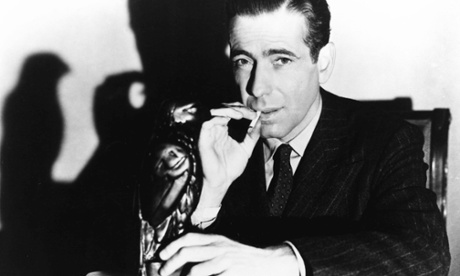
Raymond Chandler, who has yet to appear in this series, once said: “Hammett is all right. I give him everything. There were a lot of things he could not do, but what he did, he did superbly.” He added, in a summary that helps define Hammett’s achievement: “He was spare, frugal, hard-boiled, but he did over and over again what only the best writers can ever do at all. He wrote scenes that seemed never to have been written before.” He also gave his characters a distinctive language and convincing motivations in a genre that had grown stereotyped, flaccid and uninvolving.
The Maltese Falcon is the Hammett novel that jumps from the pages of its genre and into literature. It’s the book that introduces Sam Spade, the private detective who seduced a generation of readers, leading directly to Philip Marlowe. Dorothy Parker, never a pushover, confessed herself “in a daze of love” such as she had not known in literature “since I encountered Sir Lancelot” and claimed to have read the novel some 30 or 40 times.
What is Hammett’s appeal? The hard-boiled detective was not really his invention, but he made him a character readers could identify with: the beady-eyed loner who coolly puts himself in harm’s way out of a fierce determination to redress wrong and achieve justice. That’s a winning insight into the character of any great protagonist. Spade’s involvement in the world is not cynical but passionate, and yet his successes are always shadowed by hints of loss and failure. This has filtered down into the work of countless genre writers from Chandler to Le Carré, to Sara Paretsky. Moreover, like Hammett himself, Spade is vivid, physical, and highly sexed. He also shares many elements of Hammett’s career and character. Strangely, from a writer with a keen eye on the market, Spade makes only this one appearance in a full-length fiction.
The three principal women at the heart of The Maltese Falcon, especially Brigid O’Shaughnessy, all respond to Spade’s sexual magnetism. But he, in the end, will always subordinate his desires to the greater good. So he will surrender Brigid, the murderer, to the cops. “You’ll never understand me,” he says to her, an almost existential statement about the relations of men and women.
Chandler said that Hammett took the murder out of the drawing room and put it back in the alley, where it belongs, adding that “Down these mean streets a man must go who is not himself mean, who is neither tarnished nor afraid.” Like Wilkie Collins and Arthur Conan Doyle (19 and 26 in this series), Hammett was an original who created a profoundly influential literary template that gives him classic status.
A note on the text
The Maltese Falcon was originally serialised in HL Mencken’s “pulp” magazine, Black Mask, from September 1929. Then it was published in book form by Alfred A Knopf in February 1930. For publication, Blanche Knopf, his editor, tried to tone down the overt sexuality of the magazine version (she feared the references to Joel Cairo’s homosexuality would alienate readers) but Hammett prevailed.
The story has been adapted several times for the cinema, and the 1941 version, starring Humphrey Bogart, Mary Astor, Peter Lorre and Sydney Greenstreet, is generally thought to be a film noir classic.
Raymond Chandler, who owes so much to Hammett, deserves the last word. He said of The Maltese Falcon: “If you can show me 20 books written approximately 20 years back that have as much guts and life now, I’ll eat them between slices of Edmund Wilson’s head.” Nearly 100 years later, the “guts and life” of Hammett’s prose still puts some of his etiolated heirs to shame.
Three more from Dashiell Hammett
Red Harvest (1929); The Glass Key (1931); The Thin Man (1934).
The Maltese Falcon is published by Orion (£7.99). Click here to buy it for £6.39 with free UK p&p

